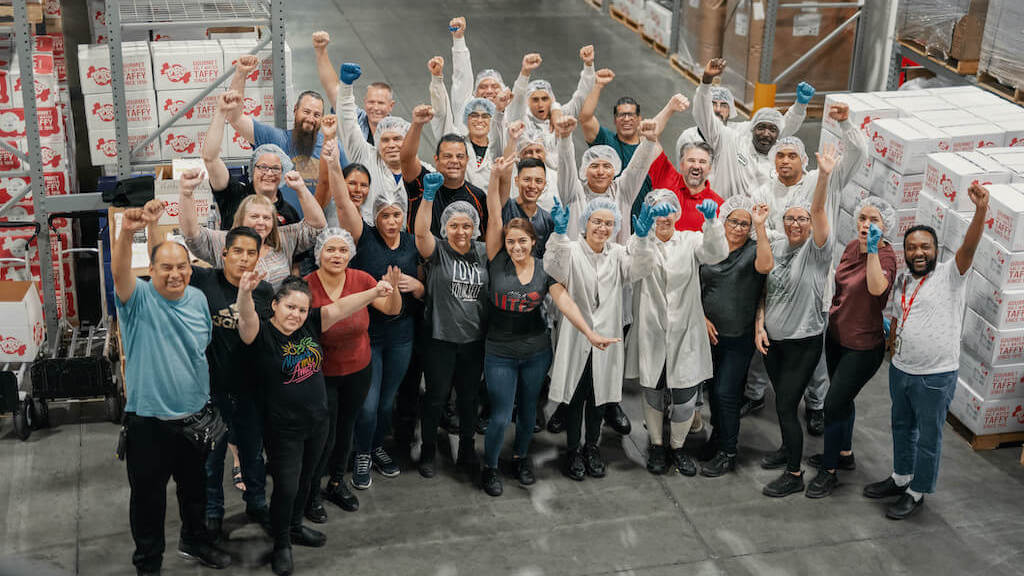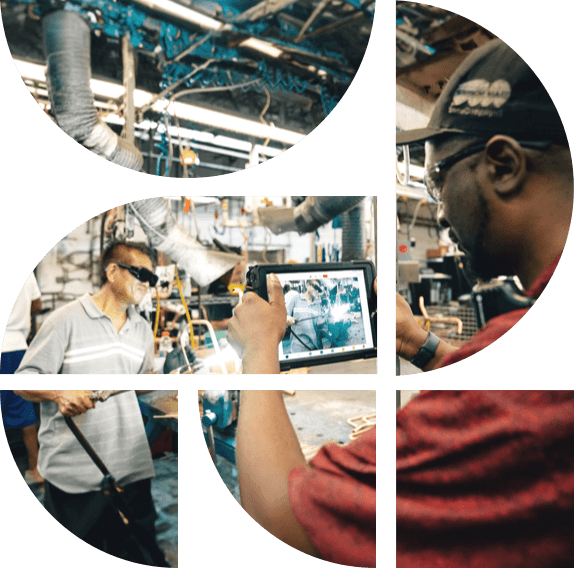Unlock the Secrets to Increased Productivity with Redzone's Newly Released Benchmark Report! Download Today
John Ponte
May 20, 2025

Technology helps us in our everyday lives, and manufacturing benefits from technology in the same way. As digital connectivity becomes the norm, the concept of the connected workforce is taking center stage. Equipped with advanced tools like the Internet of Things (IoT), artificial intelligence, and machine learning, connected workers in manufacturing are empowered to work more efficiently, safely, and accurately. These technologies enable real-time data analysis, streamlined production, and improved quality control, driving a modern, more productive, and interconnected industrial workforce.
In this guide, we’ll explore the benefits of connected workers in manufacturing, the technologies driving the connected worker revolution and how manufacturers can embrace this era to gain a competitive advantage in the market.
A connected worker is an employee who is integrated into their environment by connective technologies. These technologies enable workers to perform their jobs more efficiently and effectively, and they can access and share information, communicate with others and perform tasks remotely. But being a connected worker is much more than simply using technology to stay connected and collaborate with others.
Connected workers can be found in all areas of a business, from the factory floor to the executive suite. In manufacturing, for example, connected workers can use digital tools to access real-time data, monitor equipment performance and work with other team members to optimize production processes. In doing so, they can increase productivity, improve quality and enhance safety, all while driving innovation and competitiveness for their organization.
In short, connected workers are essential to the success of modern businesses. They possess a unique set of skills and attributes that enable them to work more efficiently, collaborate more effectively and make better decisions.
A connected workforce can offer a wide range of advantages to organizations across various industries. These benefits stem from the use of connective technologies that enable frontline workers to perform their tasks more efficiently and collaboratively. Here are some of the many benefits of a connected workforce:
By embracing connective technologies and empowering their connected workers, organizations can unlock the full potential of their workforce and gain a competitive advantage in the market.
To fully leverage the benefits of a connected workforce, companies must take measures to increase employee engagement. By promoting a culture of collaboration and providing support for new technologies, companies can help workers to feel more connected to their jobs, which can reduce turnover and increase productivity. Here are a few strategies for increasing worker engagement:
A connected workforce relies on technology to stay engaged and productive. Here are some of the top forms of technology used by today’s connected workforce:
Connected workers are a vital component of a modern manufacturing workforce. Here are a few scenarios where connected workers can make an impact:
Haviland Enterprises, Inc. achieved an OEE uplift of 20pts when they deployed the Redzone Connected Workforce Solution. Redzone’s in-app translation, transcription, chat, and video capabilities unified the efforts of a bilingual workforce toward a common goal. Haviland’s maintenance team improved their processes with video-based work orders. And they reduced average changeover time by 50% (and sustained it) when they performed a top-loss kaizen event, leveraging the Lean tools and collaborative problem solving built into the app.
When selecting a connected workforce platform solutions, it’s important to consider your organization’s unique needs and goals, and how it fits into your overall worker strategy. Here are some things to keep in mind:
When evaluating different connected worker platforms, ask yourself the following questions:
By considering these factors and asking the right questions, you can choose a connected worker platform that meets your needs and helps your organization achieve its goals.
The benefits of a connected workforce are clear. By bringing cross-functional teams together with a common goal of providing them with the tools and resources they need, organizations can see significant improvements in productivity, efficiency and overall performance. Furthermore, by investing in a connected workforce, organizations can foster a sense of trust and empower their frontline employees to take ownership of their work and solve problems on their own, ultimately leading to greater success and a more efficient workplace.
Don’t wait any longer to start transforming your workforce with connected worker technologies — download our eBook, The New Connected Workforce, and take the first step toward a more productive manufacturing operation.
Successful manufacturing processes are efficient processes. The connected workforce finds efficiencies in processes not even identified as inefficient. Any manufacturer looking to increase efficiency should leverage a connected workforce.
Redzone is purpose-built to power connected frontline teams. Its suite of digital tools enables real-time communication, digital workflows, and performance visibility and shares them with teams plant-wide.
Redzone increases frontline engagement by giving workers the tools to communicate more effectively, celebrate wins, and contribute to continuous improvement. Teams using Redzone are autonomous, accountable, and motivated—driving better outcomes across the plant floor and increasing engagement.
Yes. Redzone is designed to complement your current manufacturing systems without requiring complex IT overhauls. It integrates with ERP, MES, and other existing technologies, making it quick to deploy and allowing frontline teams in production, maintenance, and quality to share a common system with a single source of truth.
Manufacturers see measurable productivity and engagement improvements within 90 days of implementation. Redzone’s intuitive interface and frontline-first design mean adoption is fast—and impact is immediate.
Redzone studies the results from every 90-day deployment program and analyzes those results in its biennial benchmark report. Results are analyzed according to factory characteristics such as industry, region, CI maturity, and factory size. This provides insight into what productivity increase any factory could realistically expect to see in 90 days using Redzone.
Not at all. Redzone is used by small, mid-sized, and large manufacturers alike. Its flexible, scalable platform adapts to any team size, helping all types of manufacturers unlock the full potential of their frontline workers.
With Redzone dashboards sharing real data in real time, conversations focus on facts, not opinions. Redzone’s real-time messaging, digital huddles, and visual dashboards give constructive ways to approach opportunities and break down communication silos. Teams share information across shifts, departments, and even facilities—keeping everyone aligned and accountable.
Redzone is purpose-built as a whole-factory solution; it delivers information at every level and brings visibility to every department. Traditional systems were designed for management, Redzone is built for the frontline. It focuses on ease of use, speed to impact, and cultural transformation—engaging workers in continuous improvement and delivering rapid ROI.
Learn more about how Redzone empowers connected frontline teams by scheduling a demo or exploring real success stories from manufacturers who have transformed their operations using Redzone.
I
John Ponte John is QAD Redzone’s Senior Director of Growth Marketing and brings a background of over 20 years in B2B Software. He is responsible for setting the growth strategy and driving global demand generation strategies to boost pipeline, new customer acquisition, and create expansion opportunities. When John’s not tracking Marketing and business targets, you can find him playing tennis, and even officiating as a national umpire and referee, working with local charities he supports, and enjoying time with family.
Twice the Frontline Engagement: Priceless A spring in the step, a smil...

Discover how plants authentically transformed their level of frontline engagement.

Contact us and let's begin empowering your frontline and growing your bottomline.
